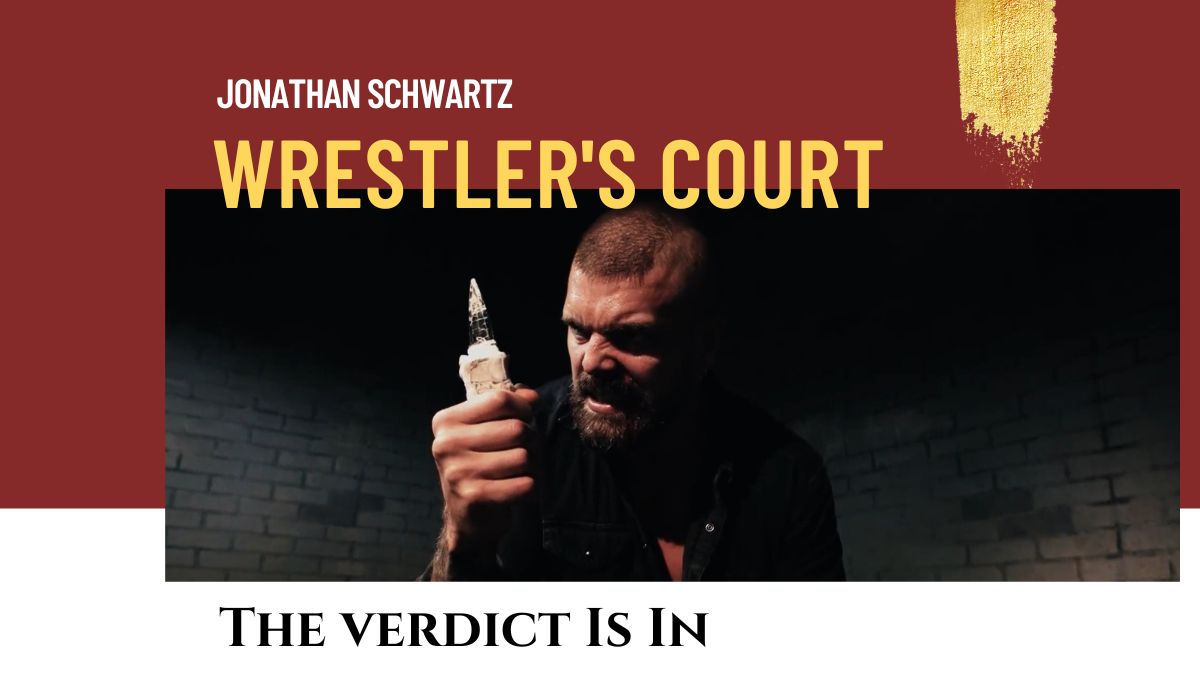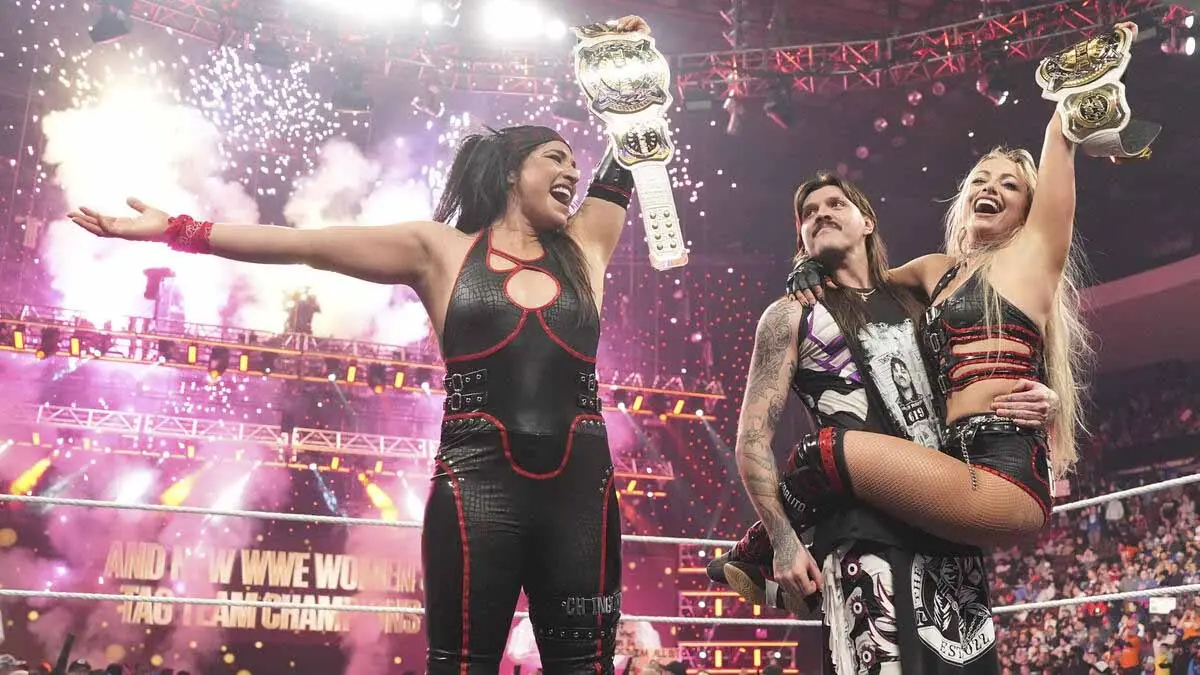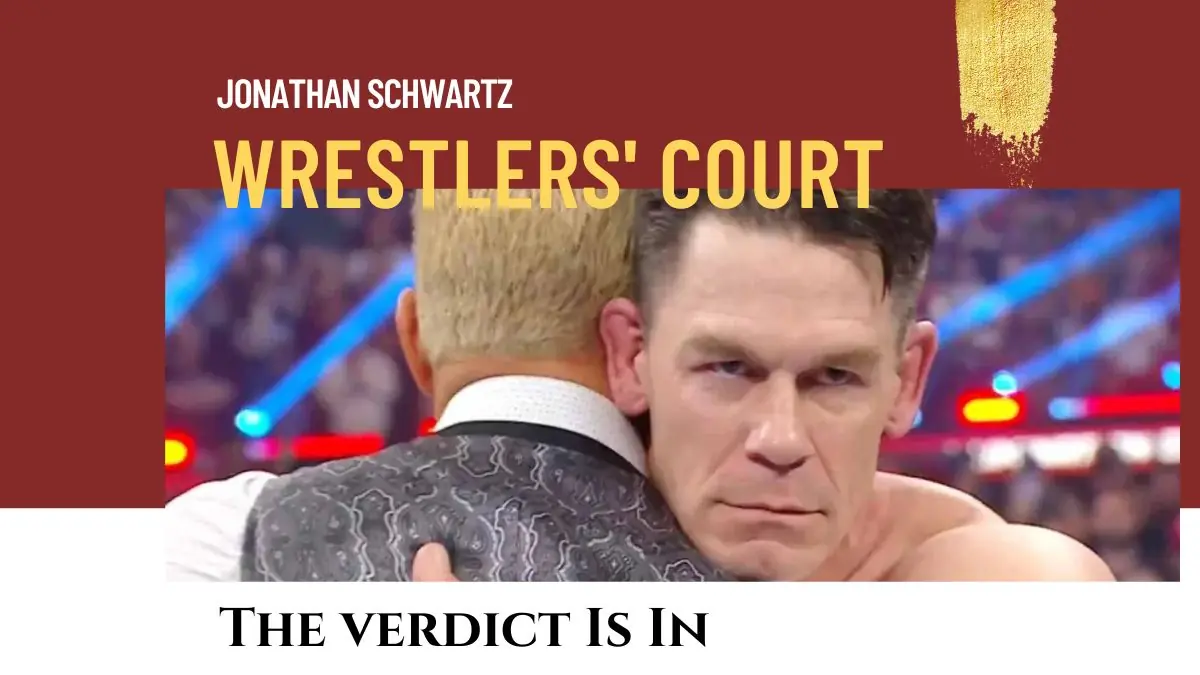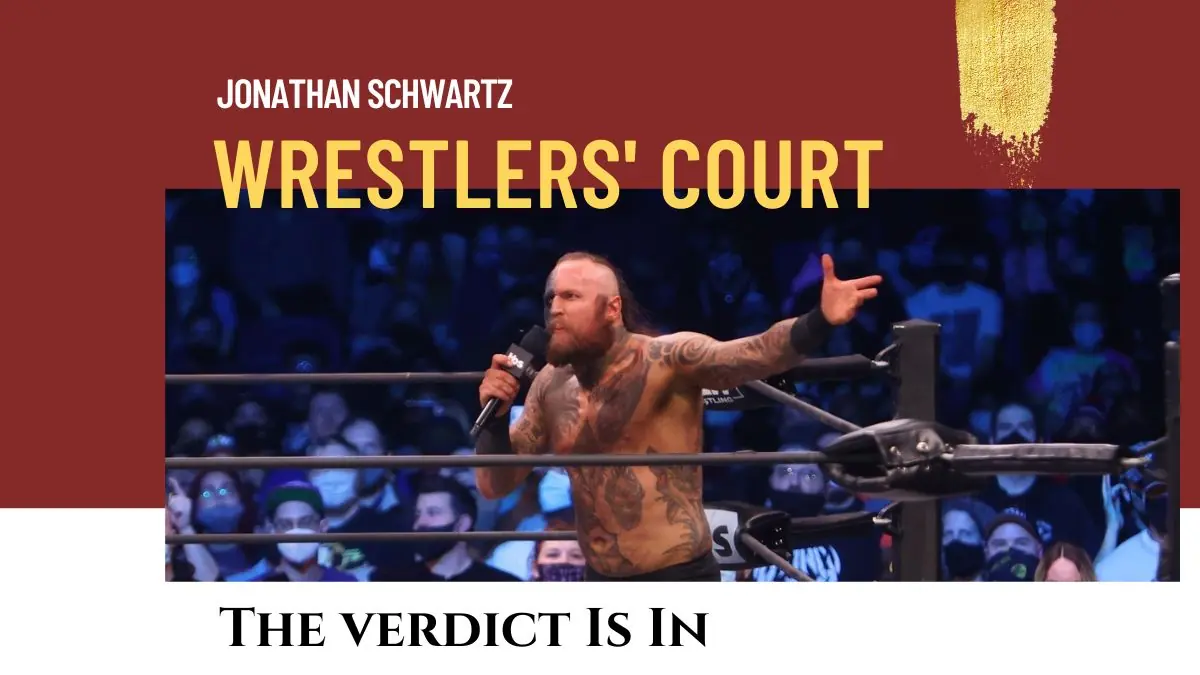For some of us, it’s customary to think about our mortality as a new year approaches. As we get older it can be hard to avoid, especially as media outlets start rolling out the fawning tributes to all manner of recently deceased celebrities.
I’m pouring one out for Ray Liotta as I write this and wondering how Keith Richards continues to buck the odds.
If you’ve been a wrestling fan for any length of time, you know we have our own list; a list that’s way too long and includes way too many names who passed away tragically early — often under pretty awful circumstances.
I’ll refrain from making such a list here; there are many who do a much better job than I could. Greg Oliver routinely publishes thoughtful and well-researched pieces right here on SlamWrestling.net. Dr. Mike Lano has contributed several pieces, given his direct knowledge of the California wrestling scene. David Shoemaker, who writes and hosts his own smart fan’s podcast, got his start writing a blog about dead wrestlers. All of which is way too heavy for me; I watch wrestling to escape the grim reality of life, not to be drawn into a web of sadness and death.
I suspect that many fans feel the same, which is one reason why, in American wrestling promotions anyway, the characters we see may get their comeuppance but almost never really die, even as they’re written out of storylines or leave promotions. Perhaps that’s for the best; pro wrestling has never really been known for it’s nuanced or sensitive approach to storytelling… but since “never say never” is a truism in wrestling, there have been cases where characters have died (or come too close for comfort) on or just off screen.
And they’ve been handled about as well as you’d expect.
Last week, I wrote a column about Impact Wrestling’s in-ring resurgence. When discussing the promotion’s lynchpins, I mentioned Eric Young. Wouldn’t you know it, they killed him off the next episode. And I don’t mean ‘wrote him out’ for insulting another wrestler’s mother like Rick Rude or had him beat down in a series of increasingly ludicrous hardcore matches like Dean Ambrose. Eric Young’s borderline psychotic cult leader character was shanked by Cody Deaner in the prison of his mind. After Young’s failure to beat Sami Callahan he begged Deaner to kill him, and Deaner obliged — complete with blood smearing his face and the blade afterward. If you remember the old HBO series Oz the whole thing reminded me of Head Baddie Vernon Schillinger’s death. But wrestling, so with worse acting, clumsier props and a heightened sense of ‘WTF”.
We have been reborn.
We are… The Design.
✖️@IMPACTWRESTLING✖️@Big_Kon1@Alan_V_Angelspic.twitter.com/M68ilSnM3v
— Cody Deaner (@CodyDeaner) December 9, 2022
Young isn’t the first Impact Wrestling character to get whacked. Quite out of the ordinary for most wrestling promotions, Impact has become a killing field for wrestlers who opt to sign elsewhere:
- Allie (who was reincarnated as AEW’s The Bunny) was stabbed in the throat by Su Yung in the Undead Realm.
- The Hardy brothers, in their ‘Broken’ personae, were reduced to dust due to a teleporter malfunction.
- Mickie James was pushed in front of a train, but she’s fine now and more worried about staving off retirement.
- Killer Kross received a ‘real’ skull crushing finale. He’s currently in WWE on his way to the midcard.
- Keira (Not Hulk) Hogan became another Su Yung victim.
- Tag team Kimber Lee and Brandi Lauren were vampirically absorbed by Su Yung (note to self: do not work a program with Su Yung if you want to live).
- Ethan Page ripped his own heart out, which explains how he wound up with Dan Lambert on AEW.
The bizarreness of these on-or-just-off-screen deaths suits the wackiness of the Impact Wrestling’s self-contained multiverse, which itself makes up for limited production values. It’s a relatively recent phenomenon, too, and smart in its way since it has an air of finality when Impact knows it can’t compete with larger contracts offered elsewhere. Silliness notwithstanding, it’s somehow easier for Impact fans to buy Ethan Page’s death as an Impact personality and his reanimation elsewhere, then it is for the clock to run out on his contract and have him pop up jobbing to Danhausen.

Outside of Impact, character deaths are relatively few and far between. Lucha Underground is a personal favorite, combining the acrobatics of Mexican wrestling with Director Robert Rodriguez’ gonzo approach to storytelling (I wish he’d do more of this and fewer Spy Kids movies, but I digress). Lucha Underground’s best moments were the product of its being completely divorced from reality, giving it a more defined narrative sense and coming across as an action-packed serial rather than a series of matches punctuated by juvenile joke-based skits. Corrupt promoter Dario Cuerto survived the run of the series and plays a similar role today as part of Major League Wrestling. His henchmen, Cortez Castro, Mr. Cisco and Bael, were not so lucky. After failing Mr. Cuerto, Bael was fed by his teammates to Cuerto’s brother Matanza (Lucha Underground’s more bloodthirsty version of Kane, who spent the better part of the early seasons locked in a cage when not rending wrestlers limb from limb).
I’m sure today Matanza is sorry and would offer to take Bael’s friends on a tour of the islands as reparations.

WWE has mostly avoided death in its storylines, for good reason. While Impact and Lucha Underground present their characters’ deaths with a knowing wink to their audiences, WWE just goes full-bore tasteless — although they’ve proven they’ll kill off anyone on the roster (note: this is distinct from repugnant angles that capitalize on actual wrestler deaths, like the infamous Melanie Pillman interview or years of Eddie Guerrero references after he died).
The Undertaker has been ‘killed’ at least twice. At the 1994 Royal Rumble he fought WWF World Heavyweight champion Yokozuna in a casket match. With the help of half the heel roster he was locked in the casket, which filled with smoke followed by an image of Taker on video promising his revenge. The casket on screen then exploded (though not the one in which he was locked). He was then shown rising up to the rafters, and possibly his Just Reward. He came back though, and lived until 2010, when his Libertarian dentist brother Kane defeated him in a “buried alive” match, which the announcers sold as real. You can argue how one could kill an undead character. The real answer: boredom. Just watch his one man show.

Even minor characters can’t catch a break. Jack Swagger’s short-lived Soaring Eagle mascot was killed by Hornswoggle, who shot him with a bow and arrow and turned him into Thanksgiving dinner. Al Snow’s dog Pepper was killed and fed to him by the Big Boss Man (who also desecrated the Big Show’s father’s kayfabe funeral). Chavo Guerrero’s hobby horse Pepe and Perry Saturn’s muse Moppy both met their ends in Fargo-inspired fashion, via a woodchipper. In a move that would surely displease the current United States Supreme Court, in 2004 Gene Snitsky inadvertently caused Lita to miscarry — although it wasn’t his fault. Torrie Wilson’s father Al became the focus of an inane storyline in 2003, where his romance with the much younger Dawn Marie took up precious airtime. Al was killed off on his honeymoon while consummating his marriage. At least he died doing what he loved.
The legitimately late Road Warrior Hawk and referee Tim White were both involved in suicide angles. Hawk’s ‘death’ may have been intended as murder at the hands of a jealous Darren ‘Puke’ Drozdov, who was being pushed as a Legion of Doom initiate. But Hawk and Animal found the storyline so distasteful that they quit the WWF before the mystery was solved. Any suicide-based angle is awful given the prevalence of actual self-harm in this business (in fairness, I’ve never liked the term being bandied about in wrestling — see Sabu’s “Homicidal, suicidal, genocidal” catchphrase or the TNA masked wrestler who also went by “Manic” but then I don’t find it entertaining in general).
The worst of these storylines revolved around WWE owner Vince McMahon. In a surprisingly coherent bit of storytelling, in 2007 Mr. McMahon started dropping hints that something bad was coming for him. At the end of an episode of Raw he entered his limousine only for cameras to cut to a full shot of the car… which then exploded into fiery carnage and death. Maybe.
The following week wrestlers acted out the kind of grief we now know all too well from Owen Hart’s and Eddie Guerrero’s and Brian Pillman’s passing while under contract. Shane and Stephanie McMahon were paraded in front of the camera to make the strongest statements and to make the audience wonder whether the explosion was accidental or intentional.
The next Raw was supposed to be a Vince McMahon “memorial” show. It turned out to be a terrible memorial, but not for McMahon. This was the Raw where Vince abruptly returned, broke the fourth wall of this abysmal storyline, and announced that Chris Benoit and his family had died. As news scrolled on my TV screen and the horror of what happened to Benoit’s family (and Benoit, whose actions I still can’t fathom) came together, WWE ran an Owen Hart-style series of scientific matches and heartfelt goodbye promos to a man whose name most fans still can’t speak. The timeline here is important but still muddled; WWE’s response airing the show as it did before facts were known has been lambasted by its critics. But who could have foreseen what happened? I don’t think any fan who is a parent can make sense of it, and I’m inclined to err on the side of understanding in this case even if it was the wrong call. As to Benoit himself, the less said the better.
McMahon’s on-screen death has since been ignored, much like Donald Trump’s in-universe purchase of WWE. If only we could say the same about the latter’s presidency.
There are many more near misses; cases where a wrestler is shown to actively try to ‘kill’ his opponent but fail.
In 1995 Hulk Hogan pushed the Giant off the roof of Detroit’s Cobo Hall early in the Halloween Havoc pay per view. Despite the Giant splash he allegedly made in the nearby Detroit River, he returned unscathed and toweled off minutes later to beat Hogan for the WCW World title.

In 2004, The Undertaker encased his manager Paul Bearer in cement following a match against the Dudley Boyz. Bearer was revealed as alive but injured on commentary in following weeks.
In 2020, WWE took advantage of the shift to cinematic matches during COVID to hold its Money in the Bank pay per view at corporate headquarters. Perhaps in a bid to outdo Halloween Havoc, WWE offered a double defenestration — tossing Rey Mysterio and Aleister Black off the roof of the old company’s old home, Titan Towers. Whoopsie! Both men were later found alive having landed on a ledge some feet below. Coincidentally both men survived their falls only to be buried on Smackdown and Rampage, respectively.

Botched executions (pun fully intended) aside, one wonders why pro wrestling has lagged in this approach. ‘Normal’ TV series have regularly killed off characters to pop ratings, rid themselves of troublesome actors, or end unpopular storylines. Grey’s Anatomy has mercilessly killed off even its most popular characters when they displeased showrunners… although in doing so, they made characters like George and McDreamy ultimate babyfaces.
Serial-based media regularly use devices like flashbacks or dream sequences to bring those same characters back, whether it’s just to create a ‘very special episode’ or to retcon a death that drew outrage from fans (Hi, Bobby Ewing!).
As a kid I remember how, in 1985 the Flash I grew up with, Barry Allen, sacrificed his life to halt the Crisis on Infinite Earths. Years after falling out of love with comic books, I learned he was resurrected in 2009. He now has a TV show on the CW, which is about to end after eight seasons. Later generations of children have mourned every superhero from Superman to Green Lantern (and not just for that Ryan Reynolds movie) to Captain America and the Fantastic Four’s Human Torch. Each of them have since returned from the dead because comics.
Ditto for Optimus Prime and one of the better cartoon heels, the Decepticon Starscream, whose deaths in the 1986 Transformers movie traumatized me along with a generation of kids, were similarly undone a few years later, and who now anchor the migraine-inducing Michael Bay movie franchise.
Whole movie arcs are defined by characters’ being killed off; from James Bond’s wife Tracy Di Vicenzo between On Her Majesty’s Secret Service and Thunderball, to Q and M and Felix in the Daniel Craig versions, to Padme in Star Wars, to half the universe in the Avengers. If John Wick’s dog lives, so does most of the criminal underworld. Disney has long trafficked in death: Cinderella keeps her room if her parents live. Bambi saves oodles on therapy bills. Anna and Elsa probably benefit from their parents’ deaths, given their regressive approach to Elsa’s powers. Moana is moved to cross the ocean by her grandmother’s passing (if you haven’t seen it, please do. Between The Rock’s performance as Maui and a solid, touching story it’s my favorite Disney movie).
Even mainstream media’s strongest representation of professional wrestling — Darren Aronovsky’s The Wrestler — ended with the presumption that its protagonist died in ring-as confirmed in real life by both Mr. Aronovsky and Mickey Rourke on an episode of Inside the Actor’s Studio.
Now that’s a finishing move.
TOP PHOTO: Cody Deaner and the shank that ended Eric Young in Impact Wrestling.
RELATED LINK




